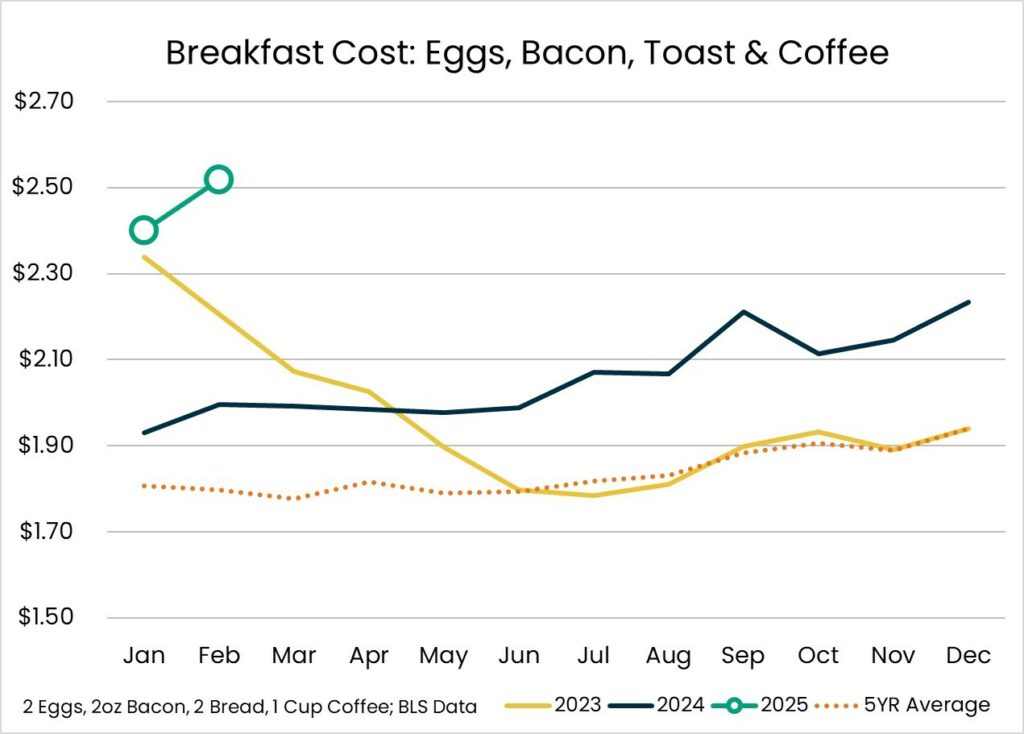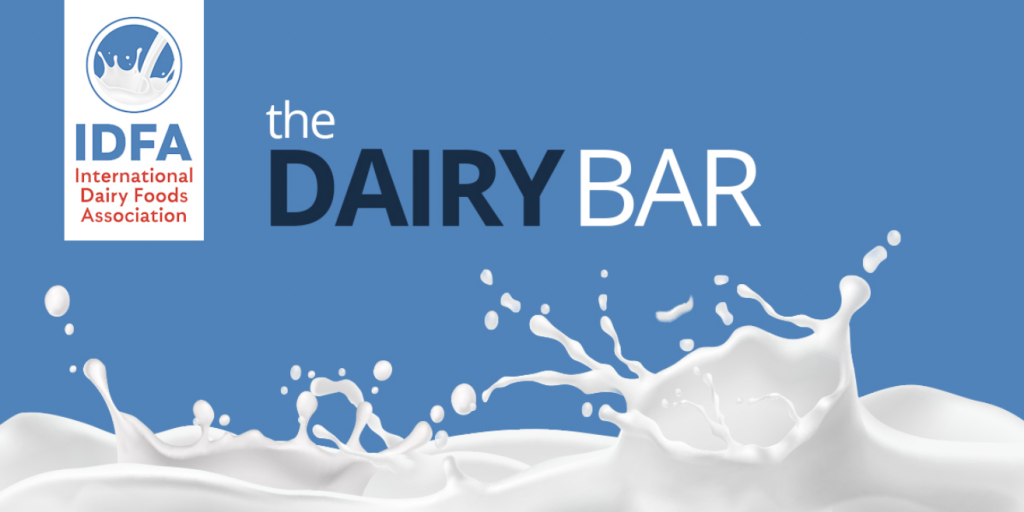Read the latest issue of The Dairy Bar, a bi-weekly report from IDFA partner Ever.Ag. The Dairy Bar features spotlight data, key policy updates, and a one-minute video that covers timely topics for the dairy industry.
The Dairy Bar: Liberation Day Is Here; Breakfast Costs Are Rising; and Restaurant Trends in a Minute!

Quick Bites: Breakfast Costs Are Rising
- Americans are feeling inflationary impacts in many aspects of life, and that includes the first meal of the day. Breakfast costs have surged in recent years. We estimate that the price of breakfast at home – including two eggs, four slices of bacon, two pieces of buttered white toast, and a cup of coffee - is $2.52, up 26% year-over-year and up 71% from 2020.
- Several breakfast foods have gone up in price. Bacon and coffee are 4% more expensive than a year ago, and butter is up 5%.
- The main culprit, though, is the cost of eggs. The average price for a dozen eggs in February was $5.90 - up a whopping 65% from last year. Egg prices have been climbing since highly pathogenic avian influenza was detected in poultry flocks across the country, tightening egg supplies. Although wholesale prices for eggs fell in March, lower prices have yet to hit the grocery aisle.
- High egg prices also affect the cost of breakfast away from home and led some restaurant chains to change menu offerings or add a surcharge for eggs. Consumers responded to these price hikes by eating out less. Placer.ai data showed visits to breakfast-first restaurant chains fell in early 2025, hitting a low point in mid-February with 9.8% fewer visits year-over-year. Although restaurant traffic slumped early in the year due to weather, post-holiday spending pullbacks, consumer confidence and other factors, restaurants focused on breakfast foods performed the worst. Until egg prices descend, Americans will continue to rethink their breakfast food choices.
Today's Special
- Welcome to “Liberation Day,” as we await President Trump’s official announcement on a potential new wave of tariffs. Until details are released, and until other countries announce their retaliation plans, it’s more of a guessing game as to what impact the tariffs will have on U.S. trade – especially in the dairy sector. While retaliatory impacts on U.S. dairy exports have, so far, been muted, there are concerns that targeted retaliation could send prices tumbling.
- Other U.S. trade partners said they already had plans in place to strike back, further escalating the trade war. In early March, the U.S. and Canada imposed 25% tariffs on each other. The U.S. delayed implementing tariffs on USMCA-compliant goods, but Canada’s fees remain in place. Canada’s new list of retaliatory tariffs should be finalized April 2, and the preliminary list includes U.S. dairy exports. Europe has said it plans to release its retaliation plan in phases, with the second, larger phase to be delayed until mid-April.
- The uncertainty and rhetoric have generated anxiety in the trading world. In addition to tariffs, proposed port fees targeting China-made ships are expected to increase the price of U.S. agricultural exports, making the U.S. less competitive. An IDFA-supported study projected the fees would lead to an 8% decrease in U.S. dairy exports, a nearly 14% decrease in dairy imports, and a net negative impact on imported inputs for the dairy industry.
- Presidential advisers suggested the administration may authorize relief payments to U.S. farmers to compensate for lost trade revenue, but there has been no official confirmation and no details released. There has also been no clarity on any relief being considered for processors.

